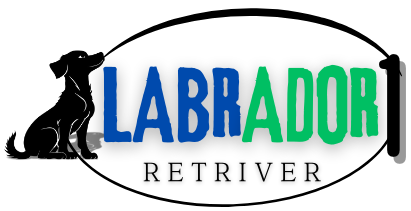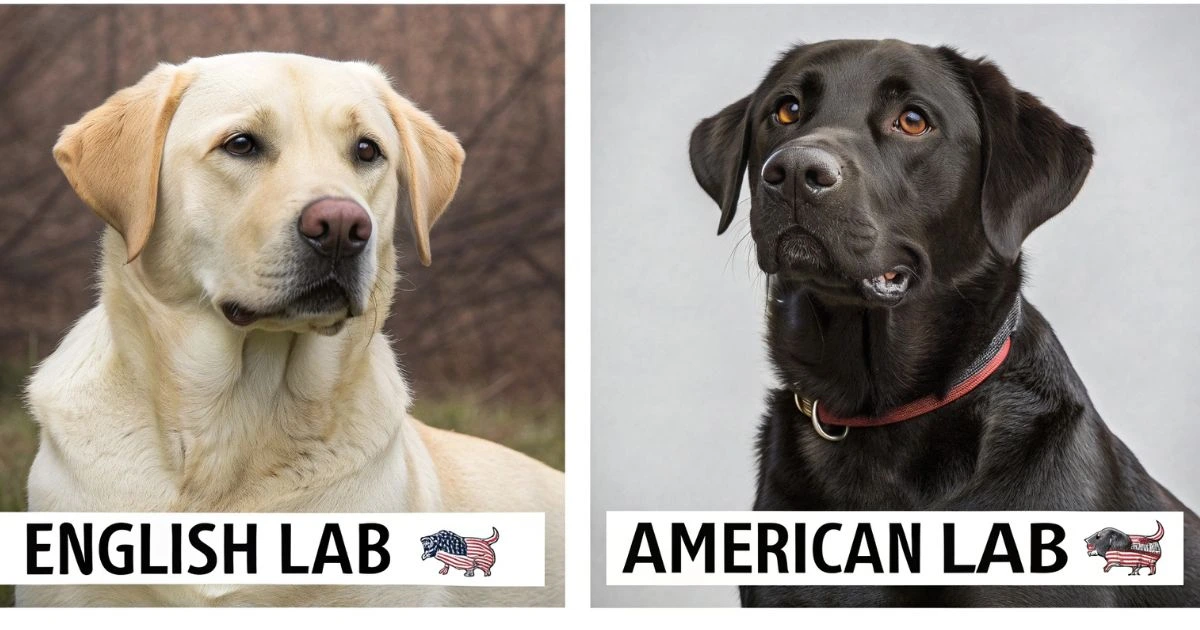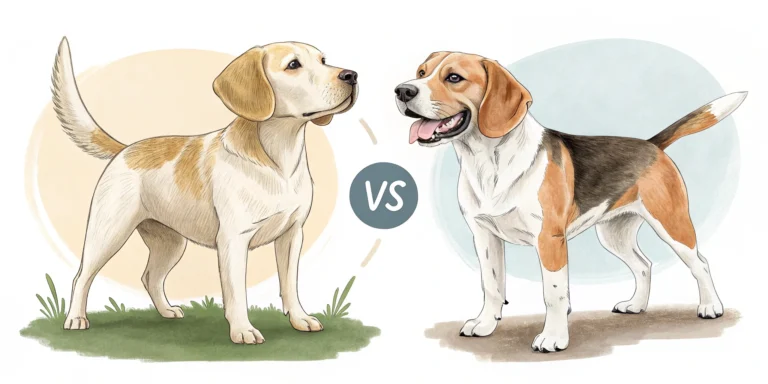English vs American Labs: A Complete Guide for Dog Lovers
You may have fallen in love at first sight with those soulful eyes, a wagging tail, and a joyful spirit. However, not all Labradors are alike. You are not alone if you have ever wondered why some Labradors are chunky cuddle bugs while others are sleek, spirited dynamos.
This isn’t just about appearances. It’s about finding the perfect companion for your lifestyle. Whether you’re choosing your first dog or adding another furry friend to your home, understanding the difference between English and American Labs will shape that journey. Let’s dig into what truly separates these lovable pups—and help you make the choice that suits you best.
Table of Contents
English vs American Labs at a Glance

To get a quick grasp of how these Labs differ, take a look at this side-by-side breakdown:
| Feature | English Lab | American Lab |
|---|---|---|
| Build | Stocky, broad-chested | Lean, athletic, longer legs |
| Temperament | Calm, even-tempered | Energetic, work-driven |
| Purpose | Bred for show and companionship | Bred for field trials and hunting |
| Trainability | Excellent for beginners | Best for experienced or active owners |
| Activity Needs | Moderate | High |
| Average Lifespan | 10–12 years | 10–12 years |
You’ll see these differences come to life in how they behave, how they play, and how they fit into your daily rhythm.
The Origin Story: How Two Labs Took Different Paths
It all starts in Newfoundland, Canada, with a water-loving dog called the St. John’s Water Dog. This early ancestor of modern Labradors was prized for retrieving fishing nets and lost gear in icy waters. As British nobles brought them to England in the 1800s, the breed began to evolve.
- English Labs were shaped by breeders who wanted show dogs—calm, beautiful, and family-friendly.
- American Labs took a different route, optimized for speed, agility, and drive to hunt and retrieve.
Even though they share roots, years of specialized breeding created the split you see today.
Spot the Difference: Physical Traits You Can See
When you see both types side by side, the contrast is striking.
English Labs
- Blocky head and broad skull
- Shorter neck and legs
- Thick tail, often called an “otter tail”
- Heavier bone structure
- Dense coat with a plush feel
American Labs
- Narrower face and head
- Longer limbs and leaner body
- Lighter build and more athletic
- Sleek, flatter coat
If you’re looking for a sturdy, teddy bear-like dog, the English Lab might be your match. Prefer a sporty partner for hikes or runs? The American Lab is likely a better fit.
Which Lab Fits Your Life? A Look at Temperament
This might be the most important factor to consider. Your dog’s personality needs to align with your lifestyle.
English Lab Temperament
- Laid-back and gentle
- Likes structured environments
- More adaptable to indoor living
- Tolerant with children and other pets
You’ll find English Labs to be affectionate and content with lounging next to you or playing calmly with your kids. Their mellow demeanor makes them ideal family dogs.
American Lab Temperament
- High-energy and focused
- Thrives on stimulation and exercise
- Needs a job to stay out of trouble
- Can be vocal or restless without enough activity
These Labs are built for action. If your life involves hikes, daily runs, or dog sports, an American Lab will love every minute of it.
Trainability: Which Lab Learns Faster?
Both types are intelligent, but their motivations differ—and that makes all the difference in training.
Training English Labs
- Responds well to treats and praise
- Easier to train for beginners
- Calmer demeanor helps with focus
Training American Labs
- Driven and eager but needs challenge
- Requires consistent leadership
- Thrives with purpose (retrieving, agility, etc.)
Pro Tip: Positive reinforcement and short, engaging sessions work best for both. Just be aware that an American Lab may need more redirection early on.
Energy Levels and Exercise Needs
If you’re a first-time owner or have a slower-paced lifestyle, energy levels matter. A misaligned match can lead to frustration for both of you.
English Lab Exercise
- Needs about 45–60 minutes per day
- Likes casual walks, indoor games, and mild play
- Content to nap between activities
American Lab Exercise
- Requires 1–2 hours daily
- Craves fast-paced games like fetch or tug
- Benefits from off-leash runs and mental tasks
You will also notice that American Labs are not as easy to “turn off.” They can become destructive or anxious if they do not engage in enough activity.
Health and Lifespan: What You Should Know

Both types generally live 10–12 years, but their needs and risks differ slightly.
Common Health Issues
- Hip & elbow dysplasia: Both types
- Progressive retinal atrophy: More common in show lines
- Obesity: Higher risk in English Labs due to lower activity
- Exercise-induced collapse (EIC): Seen in some American Labs
How to Keep Them Healthy
- Maintain a healthy weight
- Provide regular vet visits
- Use joint supplements early, especially for active dogs
- Limit over-exercising young puppies
You’ll want to partner with a breeder or rescue group that screens for genetic conditions.
Feeding for Energy and Longevity
Your Lab’s diet should reflect their energy levels and age. Here’s a simple chart to guide your choices:
| Age Group | English Lab Diet | American Lab Diet |
|---|---|---|
| Puppy (0–12 mo) | Rich in DHA & fat for growth | High protein with joint support |
| Adult (1–7 yrs) | Moderate calories, joint support | High-protein active formula |
| Senior (7+ yrs) | Low fat, omega-3 rich | Lean protein, joint supplements |
Tips for Feeding
- Always use a measuring cup
- Avoid high-calorie treats
- Fresh water is essential
- Monitor weight monthly
Making the Right Choice for Your Lifestyle
Still wondering which one’s for you? Think about your daily life and what kind of companion you want.
You may prefer an English Lab if:
- You have a young family or elderly relatives
- You enjoy relaxed walks and cuddles
- You’re looking for an easygoing, couch-loving dog
You may prefer an American Lab if:
- You’re active, outdoorsy, and love to train
- You’re interested in dog sports or field work
- You enjoy engaging your dog in daily challenges
Visit breeders or rescues, spend time with both types, and let your heart (and schedule) guide you.
What to Expect From Lab Puppies
Whether English or American, Labrador puppies are full of energy—but they grow differently.
English Lab Puppies
- Often appear chubbier and less agile
- Tend to calm down earlier
- Easier to housetrain
American Lab Puppies
- More agile from a young age
- May be more stubborn or excitable
- Need more mental stimulation early on
Key Development Stages:
- 2–3 months: Teething and chewing
- 4–6 months: Learning boundaries, basic commands
- 6–12 months: Adolescence and testing limits
- 12–18 months: Energy peak and maturity
FAQ: English vs American Labs

What’s the main difference between English and American Labs?
English Labs are bred for show and are more laid-back, while American Labs are bred for work and have higher energy levels.
Which Lab is better for families with kids?
English Labradors are often gentler and more predictable around children.
Are American Labs harder to train?
They’re not harder, just more energetic. They need focused, consistent training.
Do both types shed the same?
Yes, both shed heavily year-round, especially during seasonal coat changes.
Which type lives longer?
Both have similar lifespans, but health can vary based on breeding, weight, and lifestyle.
Conclusion: There’s No Wrong Choice—Only the Right Fit for You
At the end of the day, it is not about what is better or worse; it is about what works in your situation. Whether you prefer the sturdy, dependable English Lab or the lightning-fast American Lab, both are full of love, loyalty, and excitement.
They will accompany you through life’s ups and downs, sharing your joys and relieving your stress. So consider: What kind of companion do you require in your corner? Calm and comforting, or fearless and limitless?
Choose the Lab that best matches your spirit. And when you do, you are not just choosing a dog. You are gaining a best friend, a protector, and a devoted soul who will never disappoint you.







